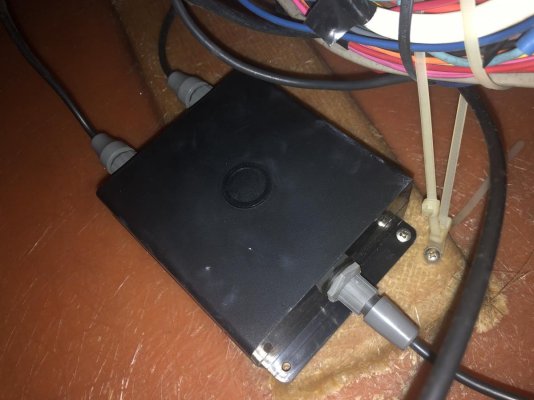So my very old Lowrance 3400 depth finder does not work. One of my winter project was to find out where the transducer is and hopefully install a new depth finder. My primary depth finder is in my Garmin chart plotter. Is it possible that I am sharing the transducer with the Garmin transducer? The wires from the lowrance connect to this box. Is this some kind of nema backbone?
I'm a bit confused, but I think it is because you're interchanging nomenclature.
The Transducer is the sounding device in the hull. The Lowrance is a Display that is more then likely a dedicated device (Depth). The Garmin is a
Multifunction Display (MFD) (Chart plotting, Radar, Depth, AIS, etc).
If you have depth on the Lowrance display and the Garmin MFD, then you either have two transducers, or you are sharing a transducer between both displays.
It looks like the signal from the transducer is being split at the box. I have never seen such a device, but that doesn't mean anything.
1) Trace the transducer cable back from the Lowrance display
2) Trace the transducer cable back from the Garmin MFD.
Where do they go? IF they both go to that 'black box' then disconnect the one for the Garmin and see if it still displays depth data. Then repeat for the other connection.
Finally, trace the cable from the black box. If that is for the transducer cable, you will eventually find it somewhere in the hull.


